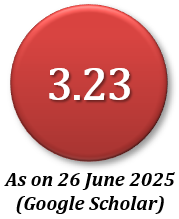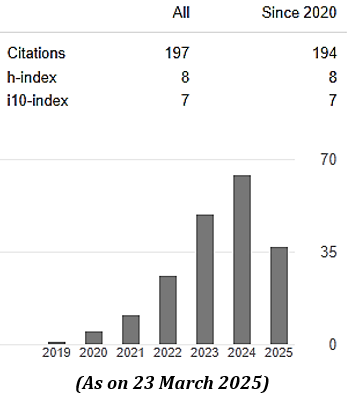POWER LINE COMMUNICATION AN ESSENTIAL TOOL FOR DIGITAL BANGLADESH
Abstract
An estimation for the power line communications (PLC) for Bangladesh is made referring various technical research papers and
current Journals. The aim of this study is to identify essential aspect of the power line communications for both domestic and
outdoor application and the use of consumer communication when various possible services are developed worldwide
commercially [1,9]. Possible services, bandwidth, service area, quality, reliability, and the cost are also taken into considerations.
The signal in a transmission line is impaired by the presence of unwanted extraneous signals (noise and interference) on the line.
The frequency dependent characteristics of the transmission line are also responsible to impair the transmission of signals along
the lines. Noise and interference, with its presence tends to impede the reception of the desired signal and is usually the limiting
factor in its detection. Noise is usually composed of randomly occurring voltages, which are unrelated in phase or frequency and
may sometimes be of a very peak in nature. Interference on the other hand is usually more structured than noise since it arises as
unwanted coupling from just a few signals in the network. In this paper a brief discussion of noise in a power line environment
and need for power line communication in Bangladesh is presented as an essential tool for digital Bangladesh.
Downloads
References
[2] A Mathematical Model of Noise in Narrowband Power Line Communication Systems: Masaaki Katayama, Senior Member, IEEE, Takaya Yamazato,
Member, IEEE, and Hiraku Okada, Member, IEEE: IEEE JOURNAL ON SELECTED AREAS IN COMMUNICATIONS, VOL. 24, NO. 7, JULY 2006.
[3] M. Katayama, S. Itou, T. Yamazato, and A. Ogawa, “Modeling of cyclostationary and frequency dependent power-line channels for communications,”
in Proc. 4th Int. Symp. Power Line Commun. Appl., Apr. 2005, pp. 123–130.
[4] A. Voglgsang, T. Langguth, G. Koerner, H. Steckenbiller, and R.Krnorr, “Measurement, characterization and simulation of noise on powerline channels,” in Proc. 4th Int. Symp. Power Line Commun.Appl., Apr. 2000, pp. 139–146.
[5] H. Meng, Y. L. Guan, and S. Chen, “Modeling and analysis of noise effects on broadband power line communications,” IEEE Trans.PowerDel., vol. 20, no. 2, pp. 630–637, Apr. 2005.
[6] Massaki KATAYAMA, “Introduction to Robust, Reliable and High-Speed Power-Line Communication Systems” IEICE trans. Fundamentals, VOL E84-A, no-12, Dec 2001.
[7] M. Tanaka and R. Someya, “The noise characteristics and transmission characteristics on data transmission using power line,” IEICE trans., VOL J69-B, no-10, pp.1147-1149, Oct. 1986.
[8] S. Tachikawa, H. Hokari and G. Marubayashi,”Power line data transmission,” IEICE Technical report, SSTA89-7, March 1989.
[9] O.C Hooijen, “A channel model for the lowvoltage power line channel: measurement and simulation results” Proc. 1997 Internatonal Symposium on Power line Communications and its Applications, pp.51-56,1997.
[10] Ezio Biglieri, Stefeno Galli, Yong-Hwan Lee, H. Vincent Poor, A. J. Han Vinck and W. H. Tranter,”Power Line Communication” guest editorial, IEEE jounnal on selcted areas in Communications, Vol.24, no.7, July 2006.
[11] Mr. Kazuma Takeshita et. Al, Fundamental study on application of spread spectrum communication systems to power distribution line carrier control (Part 3 & Part 4);Central research institute of Electric power industry report(R91031,R92003.
[12] Juuji Ibuki, Power Line Communication In Japan Tokyo Electric Power Company 4-1 Egasm-Cno,T Ssurlomi-Kuy;O Kohillma 230-8510,Japan
[13] Yasuhito KAIZAWA, Gen MARUBAYASHI "Needs for the Power Line Communications" Institute for Information Systems Science, Soka University 1-236 Tango-cho, Hachioji, Tokyo 192-0003, JAPAN
MIJST follows the open access policy.

This work is licensed under a Creative Commons Attribution-NonCommercial 4.0 International License. This allows anyone to copy, share, distribute, and modify the work for non-commercial purposes, where the original work and source should be properly credited.
















